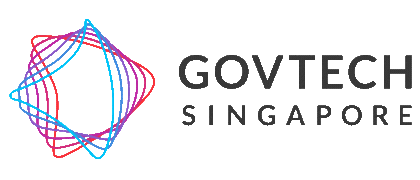Diversity and inclusion
Discover how GovTech drives inclusive innovation by designing accessible digital services and building a diverse, empowered tech community for all.
On this page
Designing digital services for everyone

We believe tech should be for everyone. We are committed to diversity and inclusion as one of our key focus areas, in all areas of our work with external and internal stakeholders.
This includes empowering vulnerable communities through tech, designing inclusive interfaces and products, and creating an inclusive and diverse tech community within GovTech and beyond.
Every year, Singapore’s government digital services undergo a round of Usability Checks (UC) conducted by GovTech, via a Mystery Shopper concept. Through the UCs, all digital services are rated against a set of criteria, which includes accessibility requirements.
The scorecards of the digital services are then shared across the whole-of-government, spurring agencies to uplift the standard of their digital services.
Below are a few ways we ensure the digital services developed across the government are inclusive and accessible for everyone.
Digital Service Standards (DSS)
This helps government agencies implement digital services that meet the Digital Government Blueprint’s (DGB) goal of delivering digital services that are easy, seamless, and relevant for our citizens and businesses.
It consists of policies, standards, and guidelines for government agencies to adhere to and fulfils a core need of Singapore’s Digital Government Journey — to design and deliver unified and consistent government digital services to citizens and businesses based on their user needs.
The design principles of the DSS include Intuitive Design and Usability, Accessibility and Inclusivity, and Relevance and Consistency.
What is DSS?
Singapore Government Design System (SGDS)
The SGDS ensures that all government services are united by a common UI language and user experience that is compliant to the DSS where applicable.
It is made up of UI components, patterns and templates that are oriented towards citizen and business needs.
By following curated design guidelines to maximise user experiences, government agencies that utilise the SGDS can transform their websites and deliver high-quality digital services easily.
What is SGDS?
Oobee
GovTech introduced this customisable, automated web accessibility-testing tool that allows software development teams to find and fix accessibility issues or gaps in their product/service.
In 2022, Oobee (previously known as Purple A11y) was also registered as a Digital Public Good by the United Nations Development Programme (UNDP) and published as an Organisation for Economic Co-operation and Development (OECD) case study for its impact as a Tech for Public Good.
What is Oobee?
Driving diversity and inclusion within GovTech
As we commit ourselves to developing inclusive and accessible products, it is just as important to ensure we apply the same principles within the organisation and among GovTechies as well.

Digital4Good programme
Helps underprivileged youth and seniors improve their digital literacy through programming and more.

Women in GovTech
This Employee Resource Group develops initiatives to support female talent in GovTech and beyond.

Accessibility enabling team
This team designs inclusive government services based on the experiences of vulnerable communities.
